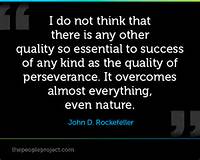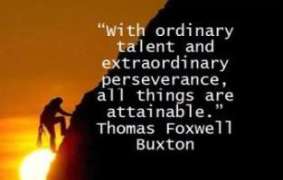 I am pleased and honored today to share my interview with author Lorena McCourtney. Her cozy mystery books, the Ivy Malone series, with her LOL (little old lady) heroine, have entertained and inspired me. She has also written two other mystery series: the Andi McConnell Mysteries and the Cate Kinkaid Files, as well as many stand-alone novels.
I am pleased and honored today to share my interview with author Lorena McCourtney. Her cozy mystery books, the Ivy Malone series, with her LOL (little old lady) heroine, have entertained and inspired me. She has also written two other mystery series: the Andi McConnell Mysteries and the Cate Kinkaid Files, as well as many stand-alone novels.
JANICE: Welcome to my website, Lorena. I’m interested to know how long you’ve been writing and how you came to it.
LORENA: I’ve been writing most of my life but doing it professionally since I was in my 20s. I started with juvenile short stories, mostly for the little Sunday School publications. (Are those even in existence anymore?) I went on to short stories for women and eventually got into novel-length romances for the secular market. When I finally decided that wasn’t for me (and the Lord gave me some serious nudges), I switched to Christian romances and then Christian mysteries.
JANICE: Who are some of the people who most influenced your decision to write?
LORENA: That would be my mother, who wrote quite a few non-fiction articles. Because of her I knew how to submit short stories to magazine editors. (Which, unimpressed with my youthful “talent,” they quickly sent right back.)
JANICE: Haha! But it was a start. What’s your preferred genre?
LORENA: My preferred genre is what I’m doing now, Christian mysteries – with a touch of romance. I’ve done a few of the serious/intense type mystery, but I prefer more lighthearted stories. My Ivy Malone Mysteries, the Andi McConnell Mysteries, the Cate Kinkaid Files, and now my new Mac ‘n’ Ivy Mysteries are all lighthearted, with a touch of humor and fun.
JANICE: What’s your motivation? Why do you write?
LORENA: Writing is my one and only talent! It’s my way to serve the Lord.
JANICE: Not sure I believe that, but I’m very glad you are using your writing. Tell me, how and where do you write? Are you a plotter or a pantser?
LORENA: I’ve always considered writing my job, a full-time job. I have a room set aside as an office in our home, and I do all my writing there. I know some writers like a busy coffee house or other place where people are around to write, but I need quiet and alone-ness.
I used to be a plotter. I’d have a short story or novel figured out from beginning to end before I started writing. But in recent years I’ve become much more of a pantser. I have a vague idea of where the story is going, but it’s definitely flexible. I’ve been known to change killers in the middle of a mystery!
JANICE: The pantser idea intrigues me, but at this point I feel I have to stick to plotting, especially with historical fiction (can’t change too much history!). Lorena, where do you get your ideas? What inspires you?
LORENA: Ideas are everywhere. I keep an “Ideas” file folder and jot down anything that happens to come into my mind. If I get more ideas about a particular story idea, I give it a file of its own and keep adding to it. I’ve never waited for “inspiration” to write. As a job, I go to my computer and work on whatever the current project is. Sometimes I don’t get much done. I’ve never had daily word count goals. Some days all I do is rewrite – or delete – what I’ve done before. If I waited for inspiration or to be in the “mood” to write, I’d never get anything done.
JANICE: I completely agree that we can’t wait for inspiration to write, or the books would never happen. How do you research and how do you know you can trust your sources?
LORENA: I usually do research on a “need to know” basis rather than doing a lot of beforehand research, though I may do some research on a setting before I get started. Also, except for two books in the Great Depression era, I’ve always done contemporaries. I think historical might need considerably more advance research than I do. For my writing, I’ll come to a hole in my story and then research that particular point. Such as with my latest book, “Something Buried, Something Blue,” I needed to know about windmills, armored car robberies, and the D.B. Cooper skyjacking case, and I researched each one as I came to it. I usually do research on the internet – checking more than one source to see if they agree. But with a setting I really like to go there and see it in person. (Also a great reason to travel!)
JANICE: What do you like most / least about writing?
LORENA: What do I like most about writing? Well, basically, I can’t imagine life without writing. It’s just what I do. Least liked – it used to be deadlines. But now that I’ve gone from traditional publishing to Indie, I don’t have to worry about deadlines. In all honesty, this means I don’t get as much done as I used to. (Actually, I consider myself kind of semi-retired now.) But I keep plugging along and eventually get something done.
JANICE: I didn’t realize you had gone Indie. The best part of that, in my opinion, is compiling all you need and pushing the publish button. No waiting for months and years for things to happen. But with independent publishing comes responsibility for self-promotion. How do you handle this? What have you found to be the best methods of promoting your work?
LORENA: After many years of being a writer, I’m still trying to figure out promotion!
JANICE: Hmm. It is a challenge. Do you use social media?
LORENA: All I’m using at this time is Facebook. And thinking I should do more, of course.
JANICE: How do you balance professional time with personal time?
LORENA: As I said before I’ve always considered writing a job, so it’s never been something I squeeze in around other things. However, since I am in this “semi-retired” status I’m more willing to take time off for other things.
JANICE: I personally think reading is critical for a writer. What are you currently reading? Do you prefer digital or print?
LORENA: I’m currently reading a couple of mysteries on my Kindle, although I read a wide variety of materials. Anything that happens to catch my interest. I now much prefer reading on my Kindle to reading print. I like being able to carry around a lot of books to read, so if I lose interest in one I can just hit delete and go to something else. I used to feel that if I started a book, I was obliged to finish it. No more! I also like being able to increase the font size to what is comfortable for me, which I can do with my Kindle. I’m more interested in the contents of a book than in the physical way those words come to me.
JANICE: Oh yes, I love having dozens of books available to me on my Kindle. And I’ve also released myself from the obligation of finishing every book I start. On a personal note, what are some of your favorite things? What makes you unique?
LORENA: My favorite things are so ordinary, not at all unique. Reading. Eating. Taking a walk, especially on the beach. Travel. My husband watches a lot of TV, but it’s more background noise than actual watching for me. I collect old pocket knives and spurs, but I do it in kind of a lackadaisical way.
JANICE: Your collections are certainly unique. What keeps you going in your writing career?
LORENA: I’ve been writing so long that, even though I’ve slowed down considerably in my “semi-retirement,” I can’t really imagine not writing. Which isn’t to say I haven’t had a lot of discouraging times over the years. But you just groan and grumble for a while and then move on.
JANICE: Yes, because it’s what you do, same as with any “job.” How is your faith reflected in your writing?
LORENA: Earlier in my Christian writing, I often wrote about characters who had a problem or crisis in their faith. But these days I tend to prefer a main character who is secure in her faith, and her faith is simply reflected in how she faces situations or tackles problems in her life. My Ivy Malone character is a good example of that.
JANICE: A more mature angle. What are some things you learned from your own writing?
LORENA: That it’s way too easy to let writing assume too great an importance in your life. Well, it certainly is important. But there’s a big world outside the writing world, and a bad review or poor sales, or whatever other difficulty you’re encountering at the time, isn’t as important in the big scheme of life – and eternity – as it might seem at the moment. So is success.
JANICE: Thank you for those words. That’s a recurring theme that’s been popping up in my life lately. What are you working on now?
LORENA: The first book in my Mac ‘n’ Ivy Mysteries series, “Something Buried, Something Blue,”  is now out in both e-book and paperback, and I’m trying to get started on the next book in the series. I’ve had some 48 books published in my writing career, but it doesn’t get any easier!
is now out in both e-book and paperback, and I’m trying to get started on the next book in the series. I’ve had some 48 books published in my writing career, but it doesn’t get any easier!
JANICE: So I’ve heard! I’d like to encourage you to continue to face that challenge, because I’m anticipating more of Mac & Ivy. What is your ultimate writing goal?
LORENA: To keep doing the best writing I can for as long as I can. Although I can say I’m pleased that I’ve won a few awards along the way and did hit a New York Times bestseller list with one book.
JANICE: Ooh! Which book was that?
LORENA: It was the first book in the Cate Kinkaid Files series: Dying to Read. It made both the Combined Print and E-Book Best Sellers list.
JANICE: Congratulations on that. Do you have any advice for beginning writers?
LORENA: In the long run, I think that persistence, a general stick-to-it-iveness, is probably more important than talent. Of course talent never hurts! But I’ve encountered more than a few would-be writers with talent who make a great start with a book – but never finish it.
JANICE: Thanks so much for taking time to answer my questions, Lorena. It helps us to get a glimpse into your life and writing.
To purchase some of Lorena’s books—I’d highly recommend them, especially the Ivy Malone series—go to Amazon. You can also see her books in order HERE.
INSERT PHOTO, BOOK IMAGE. And links.
Read Full Post »



 I am pleased and honored today to share my interview with author Lorena McCourtney. Her cozy mystery books, the Ivy Malone series, with her LOL (little old lady) heroine, have entertained and inspired me. She has also written two other mystery series: the Andi McConnell Mysteries and the Cate Kinkaid Files, as well as many stand-alone novels.
I am pleased and honored today to share my interview with author Lorena McCourtney. Her cozy mystery books, the Ivy Malone series, with her LOL (little old lady) heroine, have entertained and inspired me. She has also written two other mystery series: the Andi McConnell Mysteries and the Cate Kinkaid Files, as well as many stand-alone novels. is now out in both e-book and paperback, and I’m trying to get started on the next book in the series. I’ve had some 48 books published in my writing career, but it doesn’t get any easier!
is now out in both e-book and paperback, and I’m trying to get started on the next book in the series. I’ve had some 48 books published in my writing career, but it doesn’t get any easier!






 Maybe you are struggling with this very question right now. I hope today’s interview with author Janice Dick gives you some insight into making your decision.
Maybe you are struggling with this very question right now. I hope today’s interview with author Janice Dick gives you some insight into making your decision.






